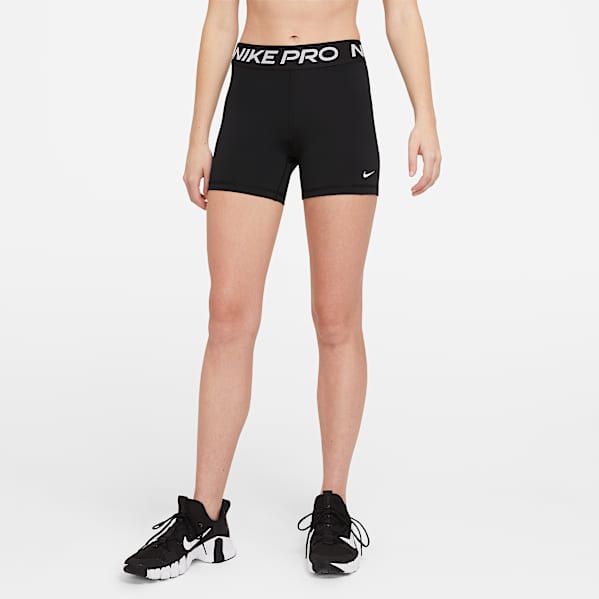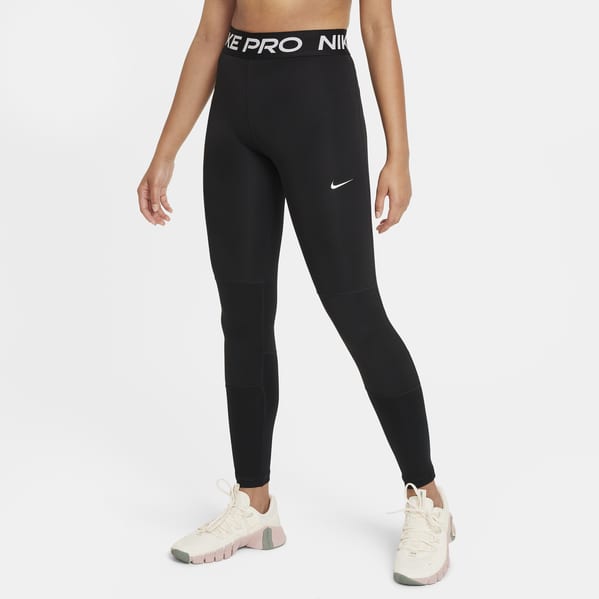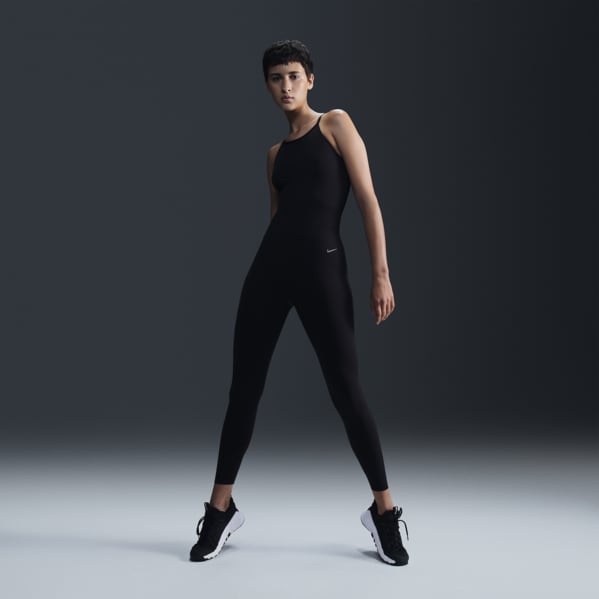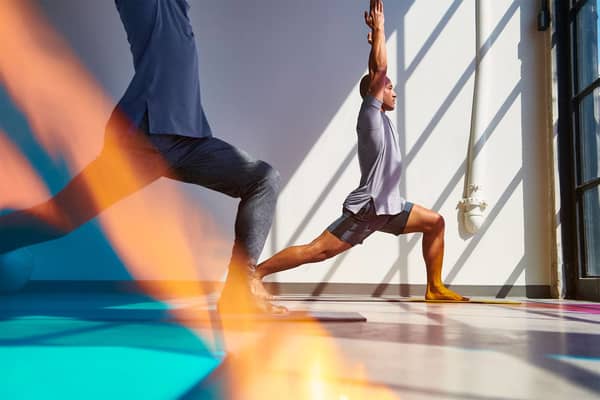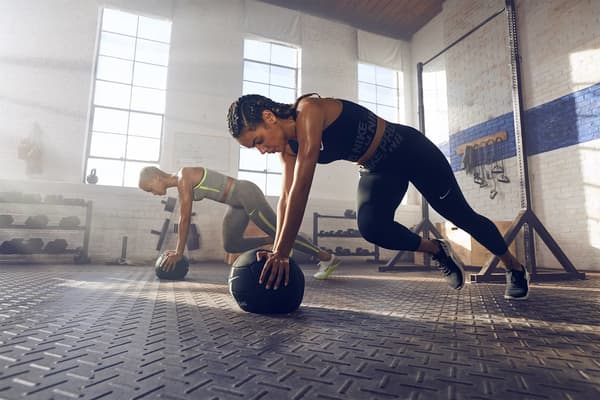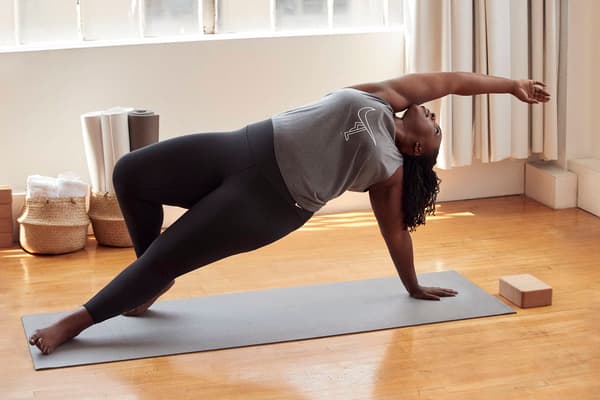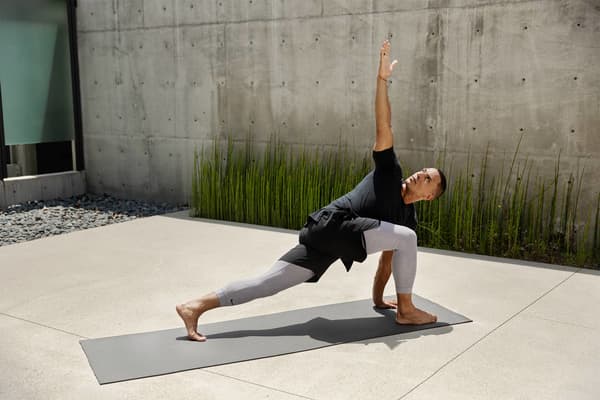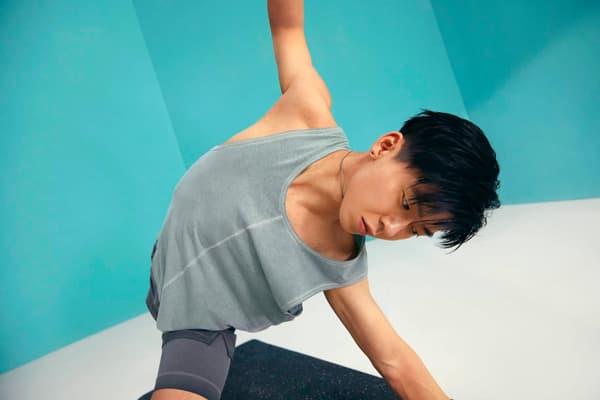New to Yoga? How to Start a Yoga Practice at Home
Sport & Activity
An at-home yoga practice is an easy and inexpensive way for beginners to get started. Here's everything you need to know.

Why Practise Yoga at Home?
Yoga at home means you can learn and practise on your own time and check out different online yoga classes and yoga teachers. Practising at home provides a way to help beginners understand and learn different yoga poses at their own pace. Because you're learning in the privacy of your own home, you're less likely to feel self-conscious or intimidated at trying something new.
Remember that yoga is for everyone, and you can always modify specific poses and postures so they are less intense. You can also use blocks or straps to help you ease into poses. Discovering a daily, at-home practice can support you physically, mentally and emotionally.
How to Start Doing Yoga at Home
Yoga mat. Beginners who start practising yoga at home will need a few items. The most important thing is a yoga mat. There are all kinds of yoga mats made from a variety of materials, including recycled and eco-friendly materials. Mats can range anywhere from $25 to more than $100.
Many workout mats are made from a sticky material to prevent your hands and feet from slipping, even if the mat gets wet or moist. Make sure the mat is long enough for your height and provides enough cushion and support.
Yoga props. As you get to know the poses better, you may want to purchase props such as yoga blocks or straps.
Yoga videos. After you find a yoga mat, go online and find a few 'yoga for beginners' videos on YouTube or yoga websites. These are typically free, but if you decide to stick with it, you can sign up for a virtual subscription for live remote classes with a specific yoga teacher or studio.
What Type of Yoga is Best for Beginners?
Restorative yoga: If it's been a while since you've stretched or performed any kind of outdoor activity, you may want to start with a gentle yoga practice such as restorative yoga.
This type of yoga focuses on releasing deep tension without having to strain yourself in active stretches. It's great if you have injuries or consistent pain, such as back or knee pain.
Restorative yoga uses a lot of props such as blocks, straps, sandbags, bolsters and blankets to help get you into the pose. It also teaches you how to meditate and release stress without really breaking a sweat.
Yin yoga: There's also yin yoga, which is similar to restorative yoga but focuses on stretching your connective tissues with the goal of lengthening and strengthening them. The poses are held for longer periods, such as 3–5 minutes. Yin yoga improves joint mobility and posture.
After you get familiar with restorative yoga, you may consider a more active type of yoga to help improve your strength and stamina while challenging your body's physical limits.
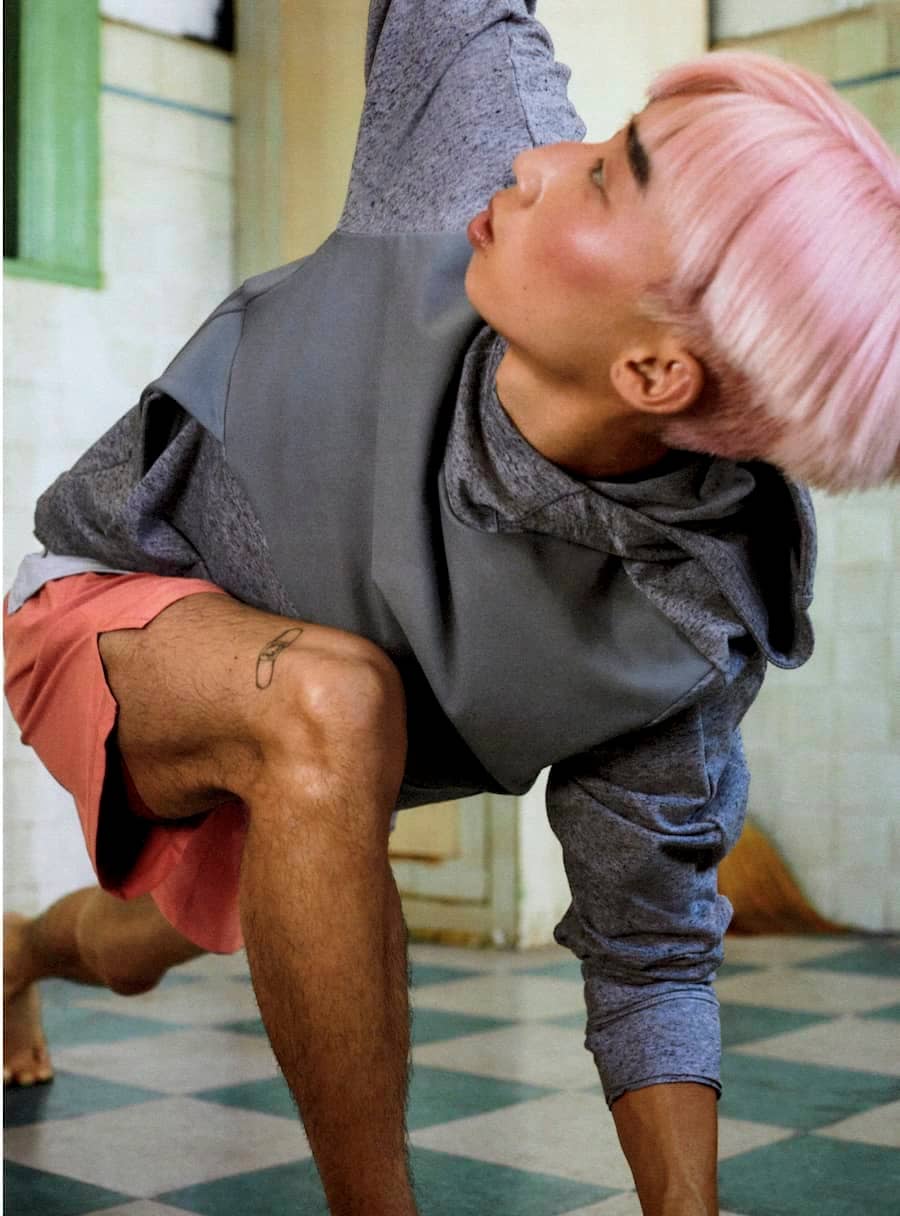
Common Types of Yoga
The following types of yoga are best if you're familiar with basic postures or want more spiritual depth and intensity in your practice.
- Vinyasa: Known as a flow class, vinyasa moves fluidly from one posture to another while staying focused on inhaling and exhaling. Vinyasa classes may be heated to temps from 27–35 degrees.
- Power: This is a popular type of yoga that may incorporate vinyasa asanas (or movements) with standing and balancing poses. Power yoga classes may be heated to anywhere from 27–35 degrees.
- Hatha: This form of yoga focuses on holding certain postures while being mindful of your breath. Practising hatha is great if you want to leave class feeling mentally and spiritually centred.
- Kundalini: An ancient form of yoga, Kundalini requires a high level of physical strength and focuses on breath, asanas, chanting, meditation and singing. Even seasoned yoga practitioners may feel lost when in a kundalini yoga class, which is physically challenging and requires a high level of strength.
- Iyengar: Named and popularised after famous yogi B.K.S. Iyengar, this kind of yoga improves alignment in your body. It incorporates the use of blocks and straps to assist you in these postures. Iyengar tends to have more moments of stillness and holding postures when compared to yoga that links your breath with asanas.
8 Important Poses for Beginners to Know
1.Child's pose is a default asana that gently stretches your neck, lower back, hips and shoulders
How to do it: Start on all fours with your knees hips-distance apart. Push your arms out in front of you and lean back so your tail bone faces the back of the room. Your glutes rest on top of your ankles or feet. Rest your forehead against the floor.
2.Downward-facing dog pose strengthens your arms, shoulders, and back and stretches the backs of your legs.
How to do it: Start on all fours with your hands directly underneath your shoulders. Lift your tail bone and press your hips up and back towards the ceiling. Straighten your legs as much as possible and push your heels down to the floor.
3.Mountain pose helps you stay connected to your breath while stretching your shoulders and lengthening your spine.
How to do it: Stand with your toes together and heels slightly apart. Move your arms above your head and reach towards the sky with your biceps next to your ears. Press firmly and evenly to the ground with both feet and relax your shoulders so they are pressed down.
4.Cobra pose is a backbend while you're lying on the floor. It is designed to strengthen and increase flexibility in your back muscles, shoulders and stomach.
How to do it: Start by lying flat on the floor on your stomach. The tops of your toes should touch the floor. Your arms should be bent, with your hands next to the tops of your ribs. Leave your arms where they are and lift your entire torso off the ground with little to no weight in your hands.
5.Tree pose is a balancing posture that helps increase strength in your legs and core.
How to do it: Stand with your feet about hip-distance apart. Lift your left leg and rest your foot against the inside of your right groin so your toes face down. Or you can rest your left foot on your inner thigh or calves. Put your hands in a prayer pose and make sure your back is straight and your shoulders are back. Hold for a few breaths and switch legs.
6.Triangle pose builds strength and endurance in your hips, spine, hamstrings and shoulders—but it may take some practice to get into the full pose.
How to do it: Start with your legs hip-distance apart or wider. Straighten your left leg so your toes face the front of the room. Reach your left hand forwards and move your torso towards the ground. Open and slightly rotate your torso to the right side. Position your arms so the right hand is at 12 o'clock and the left hand is at 6 o'clock. Hold for a few breaths and switch sides.
7.Crescent lunge pose helps create strong thighs and legs while working on your balancing skills.
How to do it: Start in a standing pose with your legs slightly apart. Take a big step forward with your left leg and bend your knee so your thigh is parallel to the floor. Square your hips to the front of the room and reach your arms to the sky so your biceps are by your ears. Make sure your back foot is lifted so the heel does not touch the floor. Breathe and switch sides.
8.Bridge pose is great for people who sit all day because it stretches your chest, lower back and neck area.
How to do it: Start by lying on your back with your knees bent so your heels are close to your glutes. With your arms by your sides and palms pressing against the floor, lift your hips to the ceiling. Keep your neck long and point your knees together so they don't splay out when you lift.
5 Tips for Practising Yoga at Home
1.Yoga Mat and Props
It's not critical to get yoga equipment beyond a mat. However, if you find difficulty getting into certain poses, you may want a pair of yoga blocks. These provide support for your hands, feet and back to rest on for certain poses, such as the triangle pose or half moon pose. Blocks are also great for restorative poses. For example, you can slide a block underneath your tail bone for the bridge pose.
Straps are also helpful if you want to work on your hamstring stretches while lying down or to help you transition into a standing balancing pose such as dancer's.
2.Make Space in Your Home
Having a dedicated space for your at-home yoga practice is ideal. If you can, choose a spot in your home where you have a clear wall—this is to practise inversions, such as headstand. Make sure you have enough space to move your body freely so you're not knocking things over or bumping into furniture. Choose a spot that is peaceful and quiet.
3.How to Establish a Routine
One of the hardest things about trying something new is getting started and doing it regularly. Schedule a regular time each day to practise your at-home yoga. Doing yoga in the morning ensures you'll get it out of the way before your day gets too busy. Block out the proper amount of time to start—perhaps 30 minutes to an hour. The most important thing is to block out a scheduled time in your day to make sure you're practising.
A few simple preparations can help establish and maintain this habit:
- Prep your yoga clothing the night before, or sleep in them if you plan on doing it first thing in the morning.
- Have the yoga video queued up on your laptop, if you're using an on-demand video from YouTube, for example.
- Roll out your yoga mat and get your space ready so all you have to do is sit down and press play when it's time to practise.
4.Set Aside Time to Meditate
A big part of yoga is quieting the mind and improving your mental state of being through meditation. Yoga has been proven to help relieve anxiety, reduce stress, depression and insomnia.
There are plenty of online videos that offer instruction on how to breathe and relax. Here's how to start a meditation practice:
- Sit up straight with your legs crossed with palms facing up on your knees.
- Close your eyes.
- Breathe in deeply on the count of seven. Hold it for four seconds.
- Exhale slowly from the mouth for a count of seven.
- Repeat a handful of times.
5.Switch It Up
One of the downsides to practising yoga at home is that it can get stale if you're doing the same thing every single day. Switch it up by finding a new virtual yoga instructor. Or, if you're ready to move on from free classes on YouTube or want to supplement your videos with live, virtual classes, most yoga studios now offer this service as part of their monthly membership package.
You can also add music and change up your yoga playlist, move your mat to a different location in your home, or invite a friend over to practise with you. Mixing it up keeps yoga fun and may help you stay motivated to keep your daily practice.
Create Proper Expectations
No one is expecting you to understand how to get into all of the poses right away. Getting better at poses, balancing and inversions takes time—just have fun with it and enjoy the movements and breathing.
Stretching and moving your body each day at home is a wonderful way to reap the benefits and a great start to setting your practice and your intention to get healthier.
Committing to an at-home practice allows you to fit your daily yoga practice into a schedule that works for you, and over time, you'll notice your body and mind becoming more flexible and stronger.

